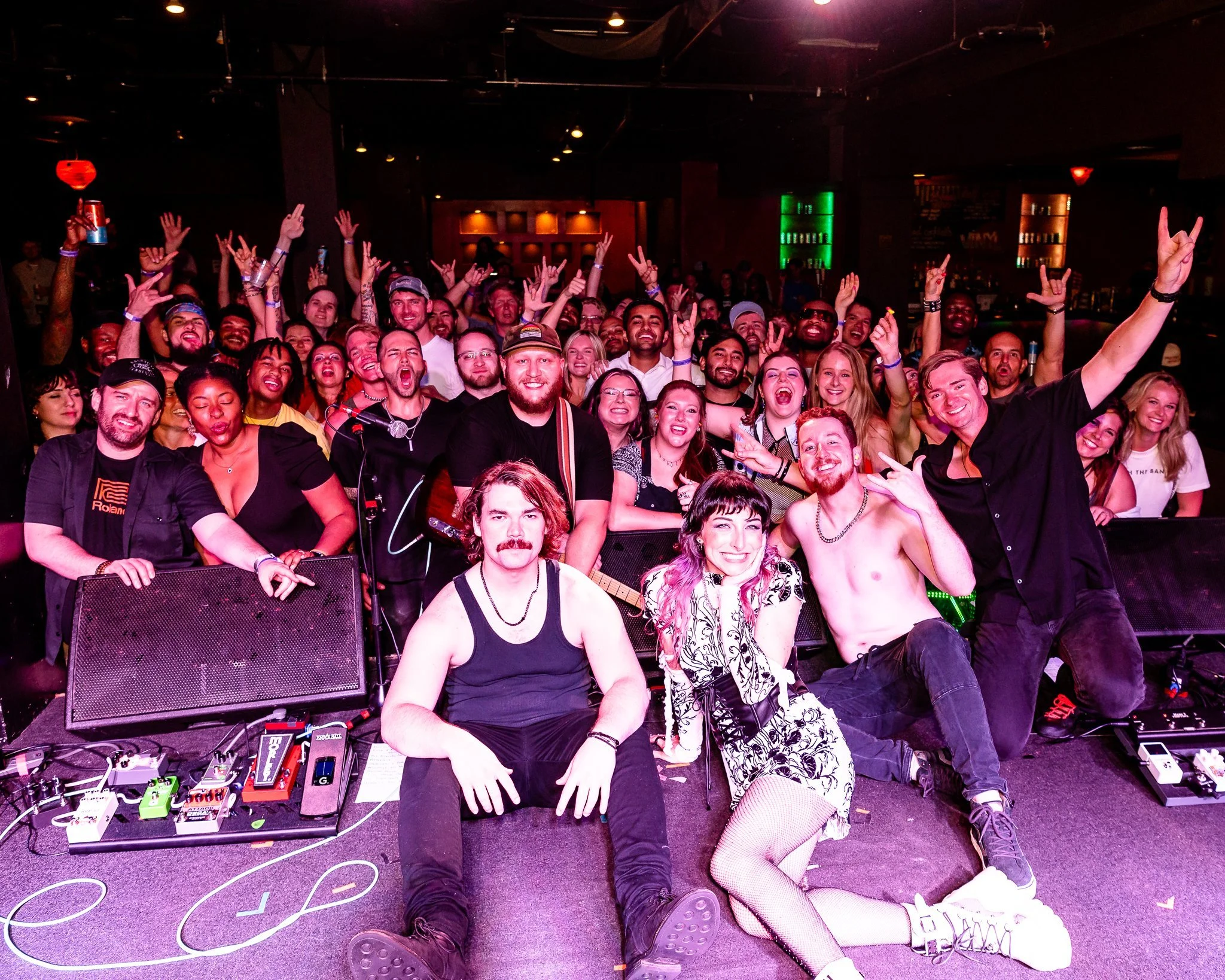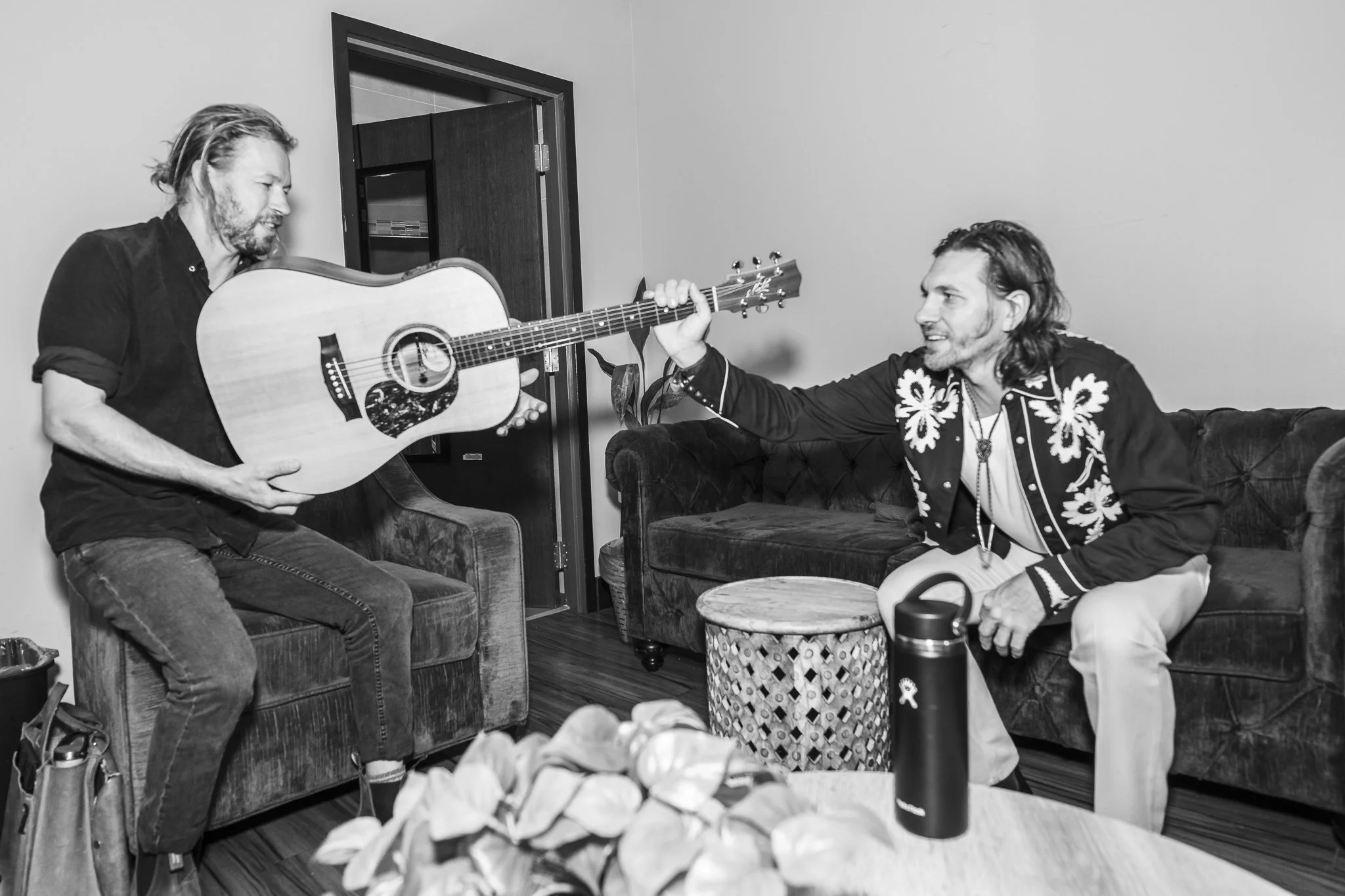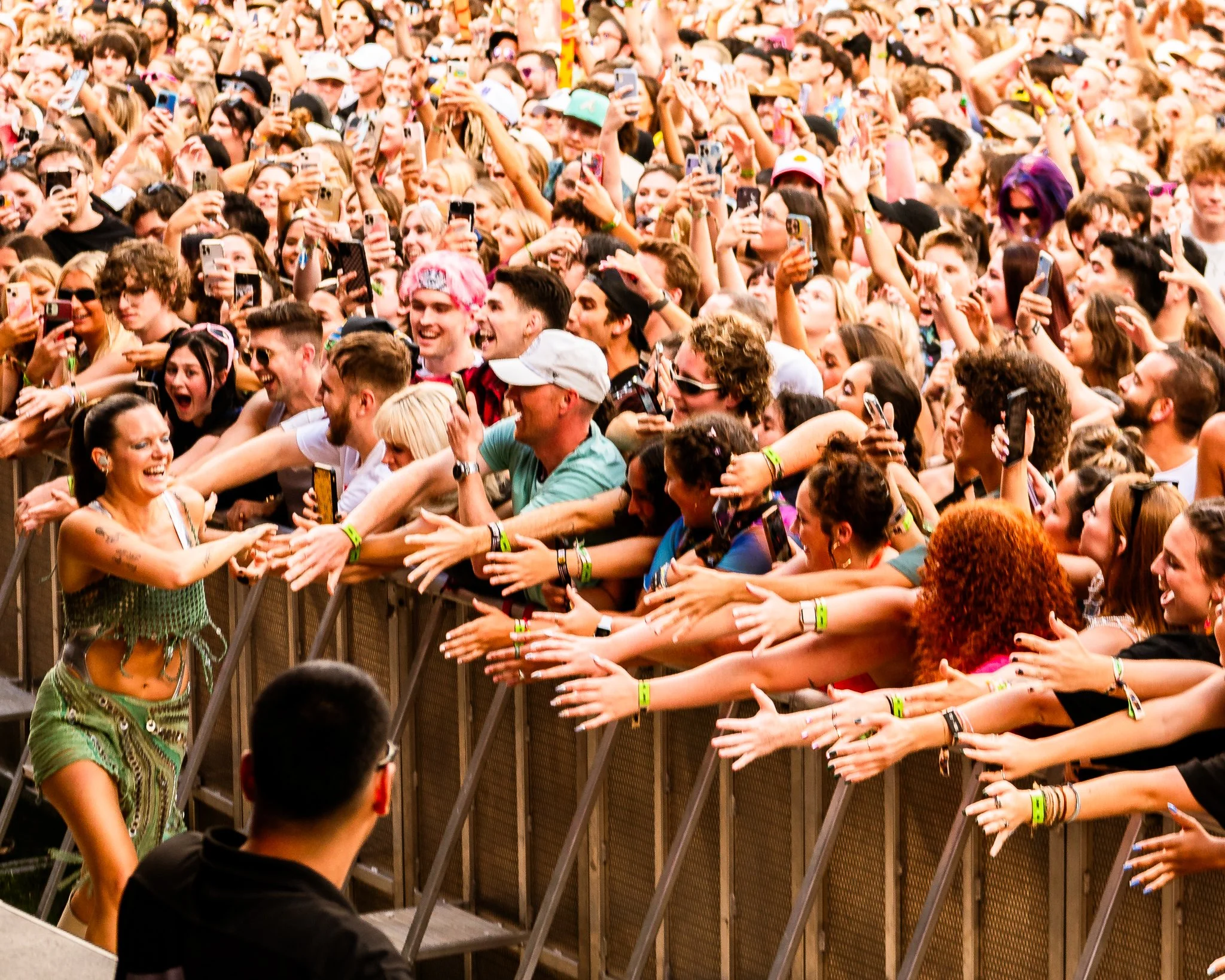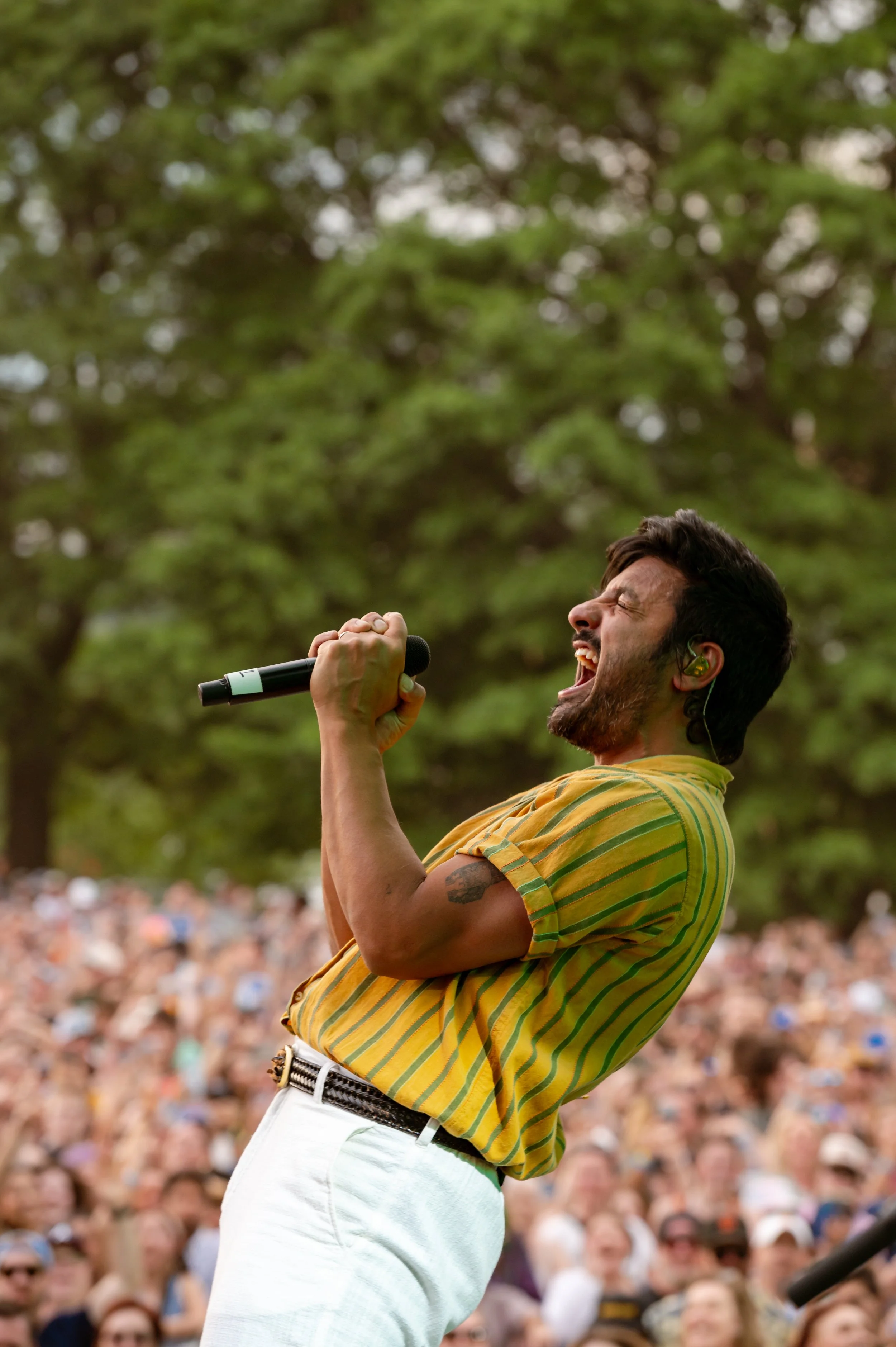Backstage & Side Stage Music Photography Guide















Table of Contents
Most people only ever see the spotlight; the screaming fans, the lights hitting just right, the moments where an artist feels untouchable. But for artists, managers, and production crews, the story runs deeper. Backstage and side stage are where the real narrative unfolds. The spaces that show personality, humanity, and the unpolished beauty of live music.
That’s why backstage photography and side-stage coverage are so valuable. They don’t replace the big hero shots from the pit; they add context. These are the frames fans rarely get to see, the stolen laughs before walking on stage, the setlist taped to the monitor, the quick exchange between crew and artist seconds before the lights go up. For musicians shaping their visual identity, this content makes them feel both accessible and authentic.
Backstage spaces aren’t glamorous. They’re usually lit by fluorescents, crammed with gear, buzzing with pre-show nerves. But that’s exactly why they matter. The contrast between the rawness backstage and the spectacle on stage gives context.
What to Capture Backstage:
Pre-show rituals: vocal warmups, stretches, pep talks.
Wardrobe & styling: moments that tie directly into an artist’s look and identity.
Candid interactions: bandmates joking, crew fine-tuning gear, managers giving the rundown.
Still details: setlists, Polaroids on mirrors, half-drunk water bottles, and sneakers tucked under folding chairs.
These moments humanize performers and break down the distance between stage and audience — which is why press outlets and sponsors love them for campaigns and stories.
The side of the stage is a photographer’s playground. It gives you a perspective that the crowd never gets:
A guitarist leaning into the spotlight from 10 feet away.
The lighting rig illuminates a singer’s silhouette.
The sea of fans from behind the mic stand.
Side-stage coverage is where intimacy meets spectacle. You’re close enough to capture emotion but positioned to show scale. These angles are perfect for recap reels, editorial features, and sponsorship decks because they feel immersive and exclusive.
For more examples of live show coverage, check out my Atlanta concert gallery.
Fans don’t just want to hear songs anymore; they want to feel part of the journey. Backstage and side stage photos/videos let artists shape their creative presence in ways that on-stage shots can’t.
For artists & managers: Provides behind-the-scenes assets that keep social media dynamic.
For production teams: Document logistics and setup for future shows or sponsorship recaps.
For brands: Creates natural, authentic placements around apparel, gear, or lifestyle products.
This type of visual storytelling goes beyond hype. It builds connection by showing personality, lifestyle, and values.
Still images capture emotion in fragments, but video adds depth.
Backstage photos: timeless snapshots for press kits, media, and campaign assets.
Backstage video: moving content for TikTok, Instagram reels, and recap edits.
In today’s short-form, motion-driven world, videography is often what makes fans feel present in a moment. A slow pan of an artist waiting side stage, hearing the crowd chant before stepping out, can create just as much impact as the headliner shot.
Learn how to balance gear and lighting challenges with Adorama’s portable lighting guide.
Backstage is sacred. It’s where the artist is most vulnerable, and access is earned, not assumed.
Be invisible until needed: capture without disrupting.
Respect boundaries: some artists welcome full coverage; others want private prep.
Communicate clearly: set expectations early on what will and won’t be shared.
Trust builds partnerships. Artists who feel respected are more likely to bring you back for tours, festivals, and brand work.
If you’re seeking someone who balances access with professionalism, contact me here.
Backstage lighting is notoriously inconsistent: harsh fluorescents, dim hallways, or neon signage. Side stage presents its own challenges: constant movement, limited space, and sensitivity to crew sightlines.
Tips for Success:
Low-light lenses: primes at f/1.4 or f/1.8 keep shots sharp.
High ISO strategy: balance noise with usable detail.
Film + Polaroid options: add nostalgic texture that digital alone can’t replicate.
Curious about the difference? This PetaPixel feature compares shooting film vs. digital at concerts.
Backstage and side stage visuals aren’t just memories; they’re versatile marketing tools.
For artists: fuels social storytelling and builds trust with fans.
For managers: provides EPK-ready assets.
For production teams: delivers proof-of-performance visuals for sponsors.
For brands: authentic integration that shows products in real use, not just staged placements.
This type of content is evergreen. A single candid image can reappear in anniversary posts, documentaries, or press features years later.
Backstage and side stage aren’t about the spectacle. It’s about the story that powers it. They show nerves, camaraderie, grit, and joy. The energy that makes live music unforgettable.
If you’re looking for a photographer who can capture both the quiet intimacy backstage and the big-picture energy side stage, let’s connect. I shoot digital, film, and video with fast turnarounds and an emphasis on authenticity.
Start by reading my Concert Tour Photography Prep guide for more strategy tips. Or reach out here to bring your behind-the-scenes story to life.




